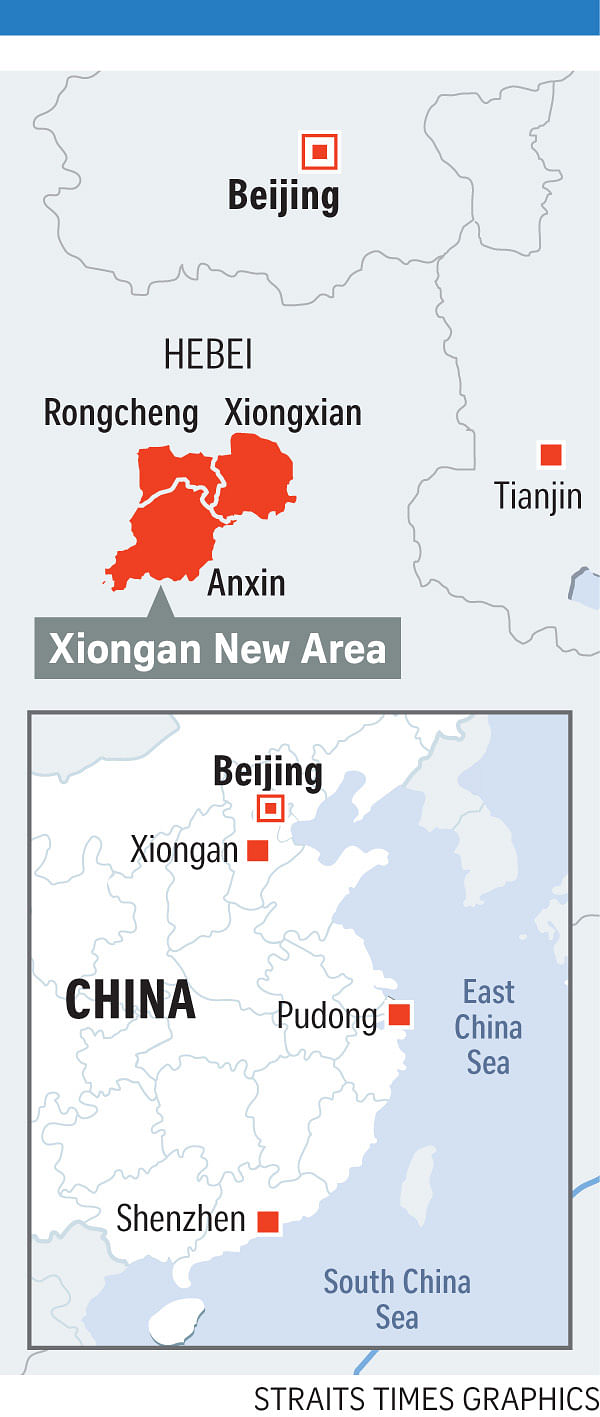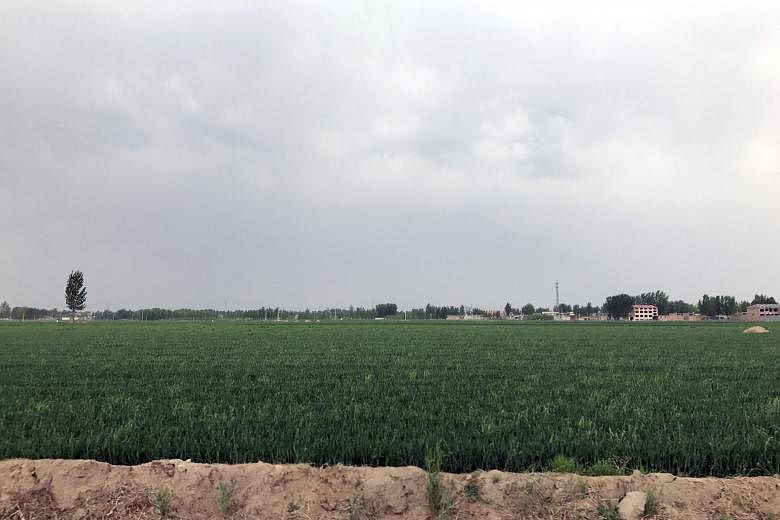Not many people would have heard of Anxin in China's northern Hebei province unless they were in the clothing business, as the county is known for making winter jackets.
After all, the villages in Anxin, such as Xiang village, a place of some 1,000 residents with low-rise farmhouses and dusty streets, are rather run-of-the-mill.
It all changed, however, after the central government announced on April 1 that Anxin will be merged with neighbouring Xiongxian and Rongcheng counties to form China's latest special economic zone (SEZ): Xiongan New Area.
Mr Xin Yonggang, 36, a resident of Xiang village who runs a small clothing enterprise, told The Straits Times it is beyond his wildest dreams that a project to build a modern city rivalling the country's first-tier cities has landed on his doorstep. "My daughter will definitely be a beneficiary of the good times," he said.
Designated as a green and innovative mid-size city of not more than 2.5 million people, Xiongan - which is about 100km from both Beijing and Tianjin - will eventually cover 2,000 sq km, almost three times the size of Singapore.

-
China's special economic zones
-
Xiongan New Area (announcement made on April 1, 2017) Area: First stage: 100 sq km Second stage: 200 sq km Long-term plan: 2,000 sq km Population: 1.1 million (as of 2014) GDP: US$2.9 million (S$4 million) in 2016
Pudong New Area (established in 1992) Area: 1,210 sq km Population: 5.47 million (as of 2014) GDP: US$875.2 million in 1990 to US$126.9 billion in 2016
Shenzhen Special Economic Zone (established in 1980) Area: 1,992 sq km Population: 11.39 million (as of 2015) GDP: US$26 million in 1979 to US$283.2 billion in 2016
SOURCES: CHINA DAILY/ASIA NEWS NETWORK, CHINA CENTRAL TELEVISION
The government has drawn up the timetable for a start-up area of 100 km sq. By 2022, when Beijing hosts the Winter Olympics, the basic infrastructure for the start-up area will be ready. And by 2030, a green, smart and liveable modern city will emerge.
One question being asked about Xiongan, though, is whether it will follow in the footsteps of China's two most famous SEZs, Shenzhen and Pudong in Shanghai.
Mr Xin said he is confident his home town will be "far better".
But experts are not so sure.
They note that Xiongan is more of a test-bed for solutions to big-city problems such as congestion and pollution and not so much the next economic powerhouse.
Already, Chinese Vice-Premier Zhang Gaoli has said Xiongan's most important role will be to house Beijing's "non-capital" functions. Research institutes, universities, government offices and company headquarters will move from Beijing to Xiongan.
"All three projects - Shenzhen, Pudong and Xiongan - came as China was on the verge of transforming its economy," said Professor Chen Lu, an urban planning expert at Hebei's Academy of Social Sciences.
When developing Shenzhen in the 1980s, China was a planned economy that was only beginning to open up. In the 1990s, when developing Pudong, China was then making a significant transition to a market-oriented economy.
The development of Xiongan comes as the country is moving into a "new normal" requiring innovation-driven growth, said Prof Chen.
"Both Shenzhen and Pudong were meant to meet the needs of connecting to the outside world... whereas Xiongan's creation is at a point when China is in need of products and technology that it could call its own," he said.
Economist Nie Huihua of Renmin University said Xiongan should not be compared economically with Shenzhen or Pudong.
"Both economic zones found their successes on the back of market forces, whereas Xiongan is government-driven," he told The Straits Times.
He wrote in a recent commentary that Shenzhen took off thanks to neighbouring Hong Kong, while Pudong relied on Shanghai's role as a global financial and trade centre.
"The point of Xiongan is not to be the third economic driver for China. It's to relieve pressures off Beijing and it will be an experimental zone for urban solutions that could prove useful to other big cities," said Prof Nie.
Still, residents of Anxin are hopeful that the new developments will bring economic benefits.
"I'm sure our lives will improve, though I've no idea what exactly is going to happen," said street vendor Wang Qinling, 46.
Souvenir shop owner Wang Yuling, 53, who sells salted duck eggs from Baiyangdian Lake, a local tourist spot, said business has improved since April 1.
"There's much more tourist traffic since then. We've got people coming from nearby Shandong and Shanxi provinces," he said.
But development may be a double-edged sword.
Already, the announcement about Xiongan New Area has attracted property speculators, prompting the local authorities to start checks on visitors and halt construction work for now.
Mr Xin wonders what development will mean for his business. "Small enterprises like mine will definitely have to be phased out. I will need to find a new job when the time comes," he said.


